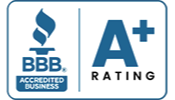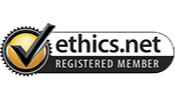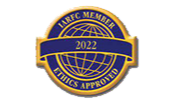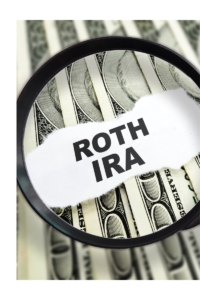Latest News
Everything thats going on at Enfold is collected here
Hey there! We are Enfold and we make really beautiful and amazing stuff.
This can be used to describe what you do, how you do it, & who you do it for.




Ask an Advisor: Best Strategies for Charitable Giving in 2024
NewsBut navigating the complexities of charitable giving can be challenging. That’s where asking an experienced fiduciary advisor can make all the difference. A knowledgeable advisor can help you develop a giving strategy tailored to your unique financial situation, helping your contributions effectively support the causes you care about while complementing your overall retirement plan.
In this blog, we’ll provide insights for HNW retirees looking to enhance their year-end giving strategies. Here’s what you need to know to make the most of your charitable contributions.
Why Charitable Giving Matters
Charitable giving is more than just a financial transaction; it’s a powerful way to make a meaningful and lasting impact on the causes you care about. Beyond the immediate benefit to the organizations and communities you support, it helps align your values with your financial plans. This creates a dual benefit of doing good while managing your wealth strategically.
With ongoing economic shifts and changes in tax laws, understanding the best ways to give can help you maximize your philanthropic contributions and financial position. Choosing the right methods and timing for your donations can help reduce your taxable income, minimize capital gains, and potentially lower your estate taxes. Let’s take a look at some of the best strategies you can use for your charitable giving efforts.
1. Leverage Donor-Advised Funds (DAFs)
A Donor-Advised Fund (DAF) is one of the most popular and flexible strategies for charitable giving. It allows you to contribute assets—such as cash, stocks, or real estate—to a tax-advantaged fund, which can then distribute grants to multiple charities over time. DAFs offer several benefits, including potential tax deductions, centralized giving, and investment growth opportunities. Here’s a closer look at the advantages:
A Qualified Charitable Distribution (QCD) allows you to transfer funds directly from your IRA to a qualified charity, helping to lower your taxable income. This strategy is particularly beneficial for those taking Required Minimum Distributions (RMDs), as it allows you to satisfy the RMD requirement without increasing your taxable income while supporting a cause you care about.
3. Bunching Charitable Contributions
For many taxpayers, itemizing deductions can be challenging due to high standard deduction thresholds. In 2024, the standard deduction amounts are $14,600 for Single or Married Filing Separately, $29,200 for Married Filing Jointly or Qualifying Surviving Spouse, and $21,900 for Head of Household. To exceed these thresholds and benefit from itemizing, “bunching” charitable contributions into a single tax year can be an effective strategy.
4. Consider Charitable Remainder Trusts (CRTs)
A Charitable Remainder Trust (CRT) is a powerful tool for individuals seeking income streams while making a meaningful charitable contribution.
5. Incorporating Charitable Giving into Estate Planning
Estate planning and charitable giving often go hand in hand for HNWIs. Incorporating charitable strategies into your estate plan can help meet your philanthropic goals while minimizing estate taxes.
Charitable giving can be complex, and the rules and regulations change frequently. This is where working with a fiduciary advisor can be beneficial. At Agemy Financial Strategies, we understand the unique needs of HNWIs in Connecticut, Colorado, and beyond and offer personalized strategies to help you maximize your charitable impact while aligning with your financial goals.
Make Your Impact Count in 2024
At Agemy Financial Strategies, we are committed to providing our clients guidance on charitable giving as they plan for retirement. We recognize your generosity’s profound impact on your community and financial well-being.
Our team of experienced fiduciaries is here to support you every step of the way, helping your retirement years be both fulfilling and financially sound. With our help, you can create a lasting legacy that reflects your values while potentially maximizing your tax benefits.
Contact us today to set up a complimentary strategy session and discover how we can help you achieve your philanthropic and financial goals.
Disclaimer: This content is for educational purposes only and should not be considered financial or investment advice. Please consult with the fiduciary advisors at Agemy Financial Strategies before making any investment decisions.
Exploring Retirement in Colorado: A Comprehensive Review
News, Retirement PlanningWhether you are considering moving to, staying in, or relocating from Colorado, Agemy Financial Strategies is here to help make your retirement planning easier. With offices in Denver, we provide personalized guidance to help you navigate this important phase of life.
In this blog, we’ll explore what makes Colorado such an appealing place to retire and discuss key factors to consider when planning your future in this beautiful state. Here’s everything you need to know.
Why Retire in Colorado?
Colorado is renowned for its vibrant arts scene and abundant outdoor activities year-round. The state offers a dynamic lifestyle that appeals to various interests and preferences. Here are a few compelling reasons why Colorado is a standout choice:
1. Stunning Natural Landscapes: Colorado is known for its breathtaking landscapes, making it a wonderful place for retirees to enjoy the outdoors at their own pace. Whether taking a stroll along scenic trails, marveling at the majestic mountains, or simply soaking in the serene beauty of places like the Great Sand Dunes National Park, there’s something for everyone. With an estimated 252 days of sunshine each year, Colorado provides a pleasant climate that allows retirees to enjoy nature comfortably, whether they prefer active adventures or more relaxed outdoor experiences.
2. Thriving Cultural Scene: Colorado offers a vibrant cultural environment with a rich tapestry of art, music, theater, and food. Denver, the state capital, is a hub of cultural activity featuring world-renowned museums, galleries, and music festivals. Boulder, another popular city among retirees, offers a unique mix of outdoor adventure and artistic communities. It is a perfect spot for those looking to immerse themselves in a dynamic cultural setting.
3. Popular Retirement Communities: Retirement communities offer an excellent opportunity to connect with like-minded individuals, fostering social interactions and shared interests. Colorado boasts over 240 retirement communities across the state, providing ample options for retirees seeking vibrant social environments. These communities allow you to have the best of everything with neighbors your age and loads of activities to keep you as social and busy as you want.
Things to Consider for Retiring in Colorado
While Colorado offers many benefits, there are also important factors to consider before deciding to retire in the state. However, there are several factors to consider when planning your retirement:
Retiring in Colorado has many benefits, but being mindful of the cost of living is essential. According to the Colorado Office of Economic Development and International Trade, the state’s overall cost of living is about 12% higher than the national average. This elevated cost is primarily due to housing that tends to be more expensive in popular cities like Denver, Boulder, and Colorado Springs.
While the state offers a high quality of life, retirees should carefully assess their financial situation to ensure they can sustain their desired lifestyle. According to GoBankingRates, here is what you can expect in retirement:
Partnering with a fiduciary advisor can help you effectively plan and prepare for the financial demands of living in Colorado, helping you to enjoy your retirement to the fullest.
2. Healthcare Considerations
Access to quality healthcare is crucial for retirees, and Colorado does not disappoint. The state is home to some of the top-rated hospitals in the U.S. UCHealth University of Colorado Hospital and Denver Health Medical Center are known for their excellent geriatric care services. This focus on quality healthcare helps ensure retirees have access to the medical care they need to maintain a healthy and active lifestyle.
However, even with access to excellent healthcare facilities, planning for the potential costs associated with medical care during retirement is important. Recent data shows a healthy 65-year-old couple might need over $395,000 for healthcare in retirement. It’s advisable to consider supplemental health insurance plans and long-term care insurance to cover these potential expenses.
3. Tax Considerations
When planning for retirement, making your money last throughout your golden years is essential. One crucial factor is how state-specific taxes can affect your retirement income. While Colorado does tax retirement income, it also offers several tax benefits that may work in retirees’ favor. Here are four common types of taxes to keep in mind:
Working with a fiduciary advisor can help you navigate any questions regarding Colorado taxes. By understanding these considerations, you can better plan for a financially secure retirement in Colorado.
At Agemy Financial Strategies, we help guide individuals through the complexities of retirement planning, with a focus on those living in Colorado and Connecticut. Our team of dedicated fiduciary advisors offers personalized strategies tailored to your unique financial needs and goals, including:
We take an educational approach, helping you navigate Colorado’s financial landscape and understand its potential challenges and opportunities. From effective tax management to optimizing retirement income, we provide comprehensive guidance on every aspect of your financial plan, ensuring you are well-prepared for the future. To explore our full range of services, click here.
Final Thoughts
Colorado offers many opportunities for retirees, from stunning natural beauty and a vibrant cultural scene to tax advantages and quality healthcare. However, like any major life decision, retiring in Colorado requires careful planning and consideration of various factors, including cost of living, climate, and healthcare needs.
By partnering with Agemy Financial Strategies, you can confidently navigate these complexities and create a retirement plan that aligns with your goals and aspirations. Whether you envision a dynamic urban lifestyle in Denver or a peaceful retreat in Colorado Springs, we are here to help you achieve a secure and fulfilling retirement.
Contact us today and schedule a consultation with our experienced fiduciary advisors today.
Disclaimer: This content is for educational purposes only and should not be considered financial or investment advice. Please consult with the fiduciary advisors at Agemy Financial Strategies before making any investment decisions.
Avoid the RMD Tax Trap: How to Handle Distributions Wisely
NewsSeptember 16, 2024
We’re all familiar with Required Minimum Distributions (RMDs), but new rules have made it more crucial than ever to plan carefully. Failure to do so could result in a costly tax burden and erode your retirement savings. In this blog, we’ll explore strategies to optimize your RMDs and avoid financial pitfalls, while also uncovering a lesser-known RMD trap that could impact your retirement healthcare plan.
Retirement should be about enjoying the fruits of your labor, not worrying about complicated financial decisions. Yet, one decision that often goes overlooked is what to do with your Required Minimum Distributions (RMDs). For many retirees, the default action might be to deposit these funds directly into their checking accounts. Still, this approach can lead to missed opportunities for tax efficiency, growth, and strategic financial planning. But there’s good news—you have options.
Let’s dive into smarter ways to handle your RMDs, helping ensure they align perfectly with your retirement goals and keep your money working for you.
Understanding RMDs
Required Minimum Distributions (RMDs) are mandatory withdrawals from certain tax-advantaged retirement accounts that owners must make at retirement age. The IRS states this age threshold to help ensure retirees begin drawing down their retirement savings and paying taxes on deferred income. The Secure 2.0 Act raised the age that account owners must begin taking RMDs. For 2023, the age at which account owners must start taking required minimum distributions goes up from age 72 to age 73, so individuals born in 1951 must receive their first required minimum distribution by April 1, 2025.
Understanding the timing and requirements for RMDs is crucial for retirement planning. While RMDs are unavoidable, how you manage them can significantly impact your financial health and long-term retirement strategy. To estimate your RMDs, use our free online RMD Calculator here. Consulting with a fiduciary advisor can help ensure compliance with RMD rules.
Why Avoid Dumping RMDs into Checking Accounts?
If you don’t immediately need the cash from your RMDs, there are smarter ways to handle these funds than depositing them into a checking account. By exploring alternative strategies, you can make your RMDs work harder for you. Here’s why avoiding a direct deposit into your checking account might be the better choice:
Before making any withdrawals, it’s advisable to consult with a fiduciary to understand the tax implications fully. They can provide personalized guidance based on your financial situation and help you make informed decisions about your retirement withdrawals.
One of the most straightforward ways to keep your RMDs working for you is to reinvest them in a taxable brokerage account. While this won’t shield you from taxes on your RMDs, it allows your money to grow. Here’s how it works:
2. Qualified Charitable Distributions (QCDs)
Before diving into charitable giving, reflecting on your values and philanthropic goals is essential. Consider the impact you aspire to create and whether you lean towards supporting local, national, or international charities. If you are charitably inclined, QCDs may be an option for you.
Each year, an IRA owner age 70½ or over when the distribution is made can exclude from gross income up to $100,000 of these QCDs. For a married couple, if both spouses are age 70½ or over when the distributions are made and both have IRAs, each spouse can exclude up to $100,000 for a total of up to $200,000 per year. This strategy counts toward your RMD but is not included in your taxable income, providing a win-win situation:
Working alongside a fiduciary advisor can help you evaluate how well your contributions align with your goals. Be open to adjusting your giving strategy as your circumstances and priorities evolve.
3. Set Up a Roth Conversion Ladder
A Roth conversion involves transferring funds from a Traditional IRA or 401(k) into a Roth IRA, requiring you to pay taxes on the amount converted. Unlike regular contributions, there is no limit on the amount you can convert — the annual contribution limit ($7,000 or $8,000 if you’re 50 or older) does not apply to conversions. This strategy can be tailored to your unique financial situation to maximize the benefits of a Roth IRA.
Although you cannot directly convert RMDs, you can strategically plan Roth conversions to reduce future RMDs:
You can use the IRS’s Uniform Lifetime Table to determine the amount you need to withdraw. Working with a fiduciary advisor can help you effectively manage RMD withdrawals. With strategic planning, you can optimize your retirement income and minimize unnecessary tax burdens.
A Deferred Income Annuity (DIA) can be a valuable tool if you want to secure a reliable income stream in your later years. Using a portion of your RMDs to purchase a DIA, you can convert a lump sum into guaranteed payments that begin at a future date, often several years later. Here are some benefits that can offer you peace of mind
With the flexibility to customize payments and the security of guaranteed income, a DIA could be a vital component of a well-rounded retirement plan. Discuss this option with a fiduciary advisor to determine how it fits your overall strategy.
5. Fund a 529 Plan for Grandchildren’s Education
RMDs can also be a tool for leaving a legacy for future generations. By funding a 529 plan, you can help pay for a loved one’s education expenses while also removing taxable income from your estate:
A Second RMD Hidden Healthcare Trap
Healthcare is expensive, especially as we age – which is why properly planning for these costs now can help your nest egg in your golden years. Did you know 2024 Medicare Part B & D Premiums are based on income? And RMDs may be pushing you into higher Medicare Part B & D Premiums!
As individuals progress through their retirement years, understanding the factors that influence Medicare premiums is crucial. These factors include earned and self-employment income, investment returns, real estate and rental income, retirement withdrawals, Social Security benefits, and pensions.
Required Minimum Distributions (RMDs) can push you into higher Medicare Part B and Part D premiums because they are considered taxable income. When you take RMDs from your retirement accounts, the amount is added to your adjusted gross income (AGI). If this increase pushes your AGI above certain thresholds, it can cause your Medicare premiums to rise due to the Income-Related Monthly Adjustment Amount (IRMAA).
IRMAA is a surcharge that applies to higher-income Medicare beneficiaries. For those whose income exceeds certain limits, IRMAA can significantly increase the monthly premiums for both Medicare Part B (medical insurance) and Part D (prescription drug coverage). As a result, large RMDs may unintentionally trigger higher Medicare costs, affecting your overall retirement budget.
To avoid having your Required Minimum Distributions (RMDs) push you into higher Medicare Part B and D premiums, consider the following strategies:
By carefully planning your retirement income and utilizing these strategies, you can minimize the impact of RMDs on your Medicare premiums. Consulting with a financial advisor can also help tailor a plan that suits your specific situation.
Working With a Fiduciary Advisor
When it comes to optimizing RMDs, each strategy has nuances and potential financial implications. Tax laws regarding RMDs, Medicare/income bracket changes, and charitable giving law adjustments mean your retirement income strategy must also adapt. Staying informed is crucial to maximizing the benefits of your RMDs. At Agemy Financial Strategies, we are here to offer in-depth insights into your specific RMD responsibilities and explore tax-efficient strategies for RMD management.
Our trusted fiduciary advisors can help you fulfill your legal obligations and provide personalized guidance to optimize your financial situation within the bounds of IRS regulations. We work with you to help assess your retirement income needs and craft a tailored plan aligned with your unique financial goals. Please refer to our service offerings page for a comprehensive list of our services, and don’t forget you can access our free online RMD Calculator here at any time.
Final Thoughts
Avoiding the simple transfer of RMDs into a checking account opens up opportunities to enhance your financial security and make meaningful contributions to your future and those you care about. And planning for Medicare changes along the way will help you avoid unnecessary financial surprises further down the road.
For personalized guidance and to explore the best strategies for your specific needs, consider consulting with Agemy Financial Strategies. Our team of fiduciary advisors is dedicated to helping you navigate the complexities of retirement planning and ensure your RMDs are managed per your goals.
Contact us today to learn more and set up a complimentary consultation.
Generational Wealth Tips for High-Net-Worth Investors
NewsWealth expands life choices, and generational wealth offers greater freedom by eliminating financial worries and offering the next generation a significant financial advantage. Here’s how to protect your assets to transfer your wealth to your family and loved ones efficiently.
Generational wealth—sometimes referred to as intergenerational wealth, multigenerational wealth, legacy wealth, or family wealth—is financial assets passed down from generation to generation.
Having the privilege of seeing your family’s hard-earned legacy connected down through the years is a humbling experience. But if you have built upon that wealth in your lifetime, you must ensure its strength and longevity to do the same for your loved ones as your ancestors once did for you.
The Great Generational Wealth Transfer
Baby boomers and the silent generation will bequest a total of $84.4 trillion in assets through to 2045, according to an analysis by financial market intelligence firm Cerulli and Associates. With $72.6 trillion going directly to heirs. The transfer of wealth from baby boomers will account for $53 trillion or 63% of all transfers, while the Silent Generation will hand down $15.8 trillion. As millennials and Gen X prepare to take the reins, high-net-worth investors must adopt strategies that cater to multi-generational needs and investment goals.
And now worrying figures from Gobankingrates show smart investments and money management skills are not always passed down with wealth. A staggering 70% of wealthy families lose their wealth by the next generation, with 90% losing it the generation after that.
Some millionaires were born into wealth and privilege, but many others found their fortune through good ideas and the hard work needed to bring those ideas to life. Whichever way you have built your wealth, the importance of multigenerational wealth transfer has never been more paramount.
Impact of Generational Wealth Transfer on the Economy
Generational wealth transfer has become a significant focal point for investors due to its profound implications for financial markets, investment strategies, and economic trends.
Interest rates are at a 22-year high as the Federal Reserve continues to battle inflation, and recession fears remain — but the US economy is holding in there. But is there a connection between the economy’s resilience and the ‘Great Wealth Transfer’? Billionaire investor Ray Dalio says a resounding “yes.”
“There was a big government-engineered shift in wealth from 1) the public sector (the central government and central bank) and 2) holders of government bonds to 3) the private sector (i.e., households and businesses),” he wrote.
“This made the private sector relatively insensitive to the Fed’s very rapid tightening to a more normal monetary policy. As a result of this coordinated government maneuver, the household sector’s balance sheets and income statements are in good shape, while the government’s are in bad shape.”
In other words, the federal government took on a lot more debt, and the central bank printed far more money. This causes the US balance sheet to deteriorate and contribute to inflation while benefiting the private sector.
Dalio says it’s highly likely that as the cost of interest payments keeps rising, the government will need to sell more debt, leading to a “self-imposed debt spiral.” “In my opinion, we are at the beginning of a very classic late, big cycle debt crisis, when the supply-demand gap, when you are producing too much debt and have a shortage of buyers,” he told a Bloomberg conference in June.
But while the transfer can be terrible for the Feds, it is still great news for American households. As this generation begins to pass on their assets, the total estimated wealth transfer amounts to nearly $85 trillion—eclipsing any from the past. Boomers’ millennial children stand to gain the most—$73 trillion is projected to be passed down through 2045—and an additional $12 trillion will be donated to charities.
Protecting and Passing on Your Wealth
The Great Wealth Transfer of $73 trillion being passed to the next generation can shift consumer behaviors, preferences, and spending patterns. So, investors must pay attention as it can influence the demand for things like real estate or stocks – and potentially the amount of wealth you have for the next generation. For example, giving Gen-X and Millennials’ buying power can change what is popular, affecting assets like real estate, stocks, and sustainable investments.
Adapting investment approaches to align with the preferences and priorities of inheriting generations is crucial for capitalizing on new opportunities and staying ahead in an evolving economic landscape. And it starts with protecting the legacy you have built. Let’s look at some tips to help prepare your family for this historic change.
Tip #1: Having a Comprehensive Estate Plan
Your first step to navigating this complex wealth management and transfer realm is having an estate plan. This initial step provides a roadmap for the distribution of your assets and guarantees that your wishes will carried out in the event of incapacitation or passing. Estate plans are for everyone with assets, including high-net-worth individuals. Here are some key points to consider:
Life is constantly changing, and so should your estate plan. Changes in your family structure, financial situation, or legal regulations might necessitate updates to your plan to guarantee it remains aligned with your goals. A Fiduciary Advisor can help you with any changes that life may bring and help adapt your plan accordingly.
Tip #2: Beating The Tax Deadline For Wealth Transfers
The wealth transfer comes with its fair share of tax implications. Current estate tax laws allow individuals to transfer up to $12.92 million in assets with no gift tax implications. However, by the end of 2025, these amounts will drop in half. To reap the benefits of current estate gift taxes, strategically planning and executing these transfers well before tax deadlines is crucial.
High-net-worth investors can explore opportunities like the annual gift tax exclusion, which allows individuals to gift a certain amount per recipient each year without incurring gift tax. This strategy can minimize the taxable estate while fostering a culture of giving within the family. Collaborating with financial professionals with extensive tax planning experience and wealth transfer knowledge can provide invaluable insights into navigating complex tax laws and optimizing wealth preservation to pass on to your loved ones.
Tip #3: Spousal Lifetime Access Trusts
Trusts are a great tool to protect your wealth. Specifically, Spousal Lifetime Access Trusts (SLATs) offer a creative solution for high-net-worth investors aiming to support their spouse while still gifting assets to heirs.
When assets are transferred into an irrevocable SLAT, they are effectively removed from the grantor’s estate, reducing estate tax liability upon their passing. This strategy allows high-net-worth individuals to leverage their gift tax exemption and protect a significant portion of their wealth from potential estate taxes.
In determining whether a SLAT is right for you, the first step is to work with your financial advisory team to build a personal balance sheet. This creates an accurate inventory of all of your assets and liabilities, a record of how they’re titled, and details about the liquidity features of each item. Next, you’ll build a financial plan based on your projected lifestyle.
Tip #4: Dynasty Trusts
Dynasty trusts are another irrevocable trust that extends protection across multiple generations, allowing wealth to flourish through changing times. One of the main benefits of a dynasty trust is that it allows you to transfer assets to future generations while minimizing tax liabilities.
By keeping assets within the trust, the trust can continue to grow and provide for future generations without being subject to estate taxes at each generation’s passing. As regulations and laws around trusts vary, consulting a Fiduciary Advisor is crucial to tailoring these structures to specific family objectives.
Tip #5: Working With a Fiduciary Advisor
The Great Generational Wealth Transfer should be a wake-up call for many Americans who have not yet begun their Estate planning. This can be especially challenging for those with a high-net-worth estate. You want to protect your family assets and gain the peace of mind knowing you’re prepared and in control, whatever the future may bring.
Working alongside a Fiduciary Advisor is one of the best ways to prepare you and your family for the intergenerational wealth transfer. A Fiduciary advisor can help create your estate plan to meet your specific needs.
At Agemy Financial Strategies, our trusted team can help you create a trust for your beneficiaries that clearly outlines how your wealth should be distributed and invested and who will be entrusted with your assets.
Contact us today to schedule your complimentary consultation.
Retirement On The Horizon? How To Make Sure You’re Financially Ready
NewsSeptember 13, 2024
61% of Americans 50 and older are worried they won’t have enough money for retirement. Only 21% of people have a retirement plan. Which is why a pressing question remains for many: ‘Have I saved enough for retirement?’
This question is especially critical for those approaching retirement who want to maintain a lifestyle they’ve worked hard to achieve. For wealthier individuals nearing retirement age, this question isn’t just about surviving—it’s about thriving. In this blog, we will explore the importance of retirement savings, the challenges that lie ahead, and actionable steps you can take to secure your financial future. Here’s what you need to know.
Retirement is a deeply personal journey shaped by your unique lifestyle, health, and financial commitments. While each person’s retirement dream will look different, one factor remains constant: your golden years could be at risk without sufficient savings.
According to this 2024 Planning and Progress study, Americans will need around $1.46 million to retire comfortably. This figure can be even greater for rising-cost areas like Connecticut and Colorado. For instance, as of July 2024, Zillow estimates the average home value in Connecticut to be around $411,971, up 9.7% over the past year, while in Colorado, the typical home value is about $550,511, up 1.4% over the past year.
Moreover, inflation gradually diminishes the value of your savings over time. According to recent Consumer Price Index (CPI) data, despite the smallest 12-month increase since March 2021, inflation has gradually been on the rise, with the U.S. annual rate reaching 3.2% in July 2024. If your retirement plan doesn’t account for inflation, you may find that your savings don’t go as far as you’d hoped.
The Impact of the Financial Crisis and Economic Uncertainty
Many Gen Xers are in the “sandwich generation,” juggling aging parents’ care while supporting their adult children. This dual responsibility significantly strains their finances, making it increasingly difficult to build adequate retirement savings. Alarmingly, nearly half of Gen Xers have saved less than $50,000 for retirement. This is far below the recommended goal of saving at least ten times your annual income by retirement.
Generation X has also weathered economic challenges from the 2007-2008 U.S. financial crisis and, more recently, the financial uncertainties triggered by the COVID-19 pandemic. These events have taken a toll on their ability to save for retirement. Many have been forced to dip into retirement funds to cover unexpected expenses or prioritize other financial obligations, such as paying off mortgages or funding their children’s education.
Given the complexity of these challenges, saving for retirement can feel overwhelming. However, by exploring some effective strategies, you can navigate these obstacles and work toward securing your financial future.
Are You Ready?
When planning for retirement, a common guideline is to save between 10% and 20% of your annual salary, which is generally considered sufficient to ensure a comfortable retirement. Another general principle suggests that you’ll need approximately 80% of your pre-retirement income to maintain your current lifestyle. However, if you envision a more extravagant retirement, your savings strategy should reflect that goal.
It can be valuable to assess your current savings using our free online retirement calculators and estimate how much you’ll need to live comfortably. This evaluation will help determine if you’re on the right track or if adjustments, such as reducing potential retirement expenses, are necessary.
Further Strategies To Help Boost Retirement Security
The earlier you start saving for retirement, the more peace of mind you’ll have. Knowing you have a solid plan to cover your retirement expenses allows you to enjoy your pre-retirement years without financial stress. Here are some strategies to help you save for retirement:
When it comes to retirement planning, even small missteps can have significant consequences for your financial future. Being aware of common mistakes that can derail your retirement goals during this important time is crucial. Here are some common pitfalls to avoid:
At Agemy Financial Strategies, our fiduciary advisors are committed to providing advice that is always in your best interest. We take a holistic approach, considering all aspects of your financial situation to help you achieve your envisioned retirement.
Final Thoughts
Having enough saved for retirement isn’t just about hitting a target number; it’s about crafting a financial plan that lets you live the retirement you’ve always envisioned. For wealthy individuals in Connecticut & Colorado, this means taking a comprehensive approach to retirement planning, considering all aspects of your financial situation, and working with professionals who can guide you through the process.
At Agemy Financial Strategies, we help clients navigate the complexities of retirement planning. Our team of fiduciary advisors is committed to providing personalized advice in your best interest. Whether you’re just starting to think about retirement or nearing the end of your career, we’re here to help you achieve your financial goals and help ensure a comfortable and fulfilling retirement.
Contact us today to schedule a consultation and discover how we can help you prepare for your golden years.
Stages of Retirement Income Management
NewsManaging your money effectively during retirement requires a combination of strategic decisions and a solid financial plan. Let’s explore some key strategies to help you maintain financial control throughout your golden years.
Controlling your finances during retirement can directly influence your quality of life and peace of mind during your golden years. Seventy-one percent of nonretired adults are at least moderately worried about being able to fund their retirement. This includes 42% who say they are very worried.
By controlling your finances at every stage on your road to retirement, you can help safeguard against financial stress, protect your hard-earned nest egg, and look forward to the retirement you deserve.
Creating and Managing Your Portfolio
Retirement income management is all about helping to ensure your retirement savings provide enough income for your needs and that you don’t outlive your assets. This starts with setting up and managing a portfolio that’s right for you.
Creating retirement income involves a mix of savings, investments, and sometimes continuing income streams that can sustain you during the years when you’re not working. Here are some common strategies and tips to consider as you transition into your golden years.
Pre-Retirement Planning
As you near retirement, you need to think about how you wish to spend these years. After all, with a nation living longer than ever, your retirement could last decades. Once you decide your desired lifestyle (including where you wish to retire and the standard of day-to-day living you wish to maintain), you need to calculate how you will get sufficient income to last your golden years. Some key strategies as you approach retirement include:
Generating Retirement Income
It’s important that the growth of your investment portfolio outpaces inflation, but you should balance that need for growth against the risk of exposing your savings to excessive market fluctuations. A few strategies to make your money work for you include:
Ongoing Management
Retirement income planning isn’t a one-and-done task. With the fast-paced nature of the financial markets and inflation, it’s easy to lose sight of your long-term financial objectives and get caught up in short-term fluctuations. That’s why it’s essential to periodically assess your investment portfolio to ensure it’s well-positioned to achieve your financial goals. Most importantly, it will provide you with a framework to identify potential gaps and blind spots in your investment game plan and adjust as necessary based on your lifestyle needs, market conditions, and any changes in laws or regulations that could impact your retirement income.
If doing an investment portfolio review becomes overwhelming on your own, talk to your financial advisor, who has the experience you need. This will help you make more informed decisions that are tailored to your personal financial situation.
Working with Agemy Financial Strategies
Retirement Income Management requires careful planning, ongoing assessment, and strategic decision-making. With the right approach, you can make the most of your hard-earned retirement and confidently embrace the next chapter of your life.
For over 30 years, Agemy Financial Strategies has helped our clients plan and prepare. This way, when the unforeseen occurs, our clients are uniquely positioned for success. We work hard to deliver a dependable retirement income strategy in any market, so you can enjoy the “best” of your lives during retirement.
As Fiduciary advisors, we follow strict U.S. law and standards of professional conduct to prioritize the interests of our clients over our own.
Contact us here for more information on our investing, retirement, and financial planning services today.